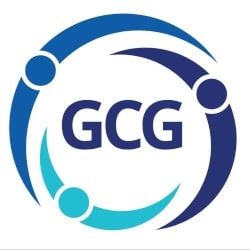Can Your LinkedIn Profile Help with Reverse Recruiting?


Can your LinkedIn profile help with reverse recruiting? Your LinkedIn profile can help you if you have it optimized with keywords and accomplishments.
What exactly is reverse recruiting, you might ask? Reverse recruiting is also known as reverse headhunting and is a strategy that job seekers might use to reach out to potential employers, and it happens a lot in the tech industry.
Job seekers might use a proactive approach and reach out to employers rather than take a reactive approach to respond to job postings. It’s the opposite of the traditional recruitment process, where recruiters reach out to candidates.
How can job seekers engage in reverse recruiting? They can often use social media, professional industry groups, or networking sites to connect with recruiters, talent acquisition specialists, or hiring managers and pitch themselves as potential candidates for suitable positions. They may even be fortunate enough to create opportunities for themselves.
A job seeker can approach a company directly, even without a job opening, to express their interest in working for the company and what pain points or problems they can solve.
Job seekers can be proactive and market themselves by submitting a Value Proposition Letter. The Value Proposition Letter is only 100-150 words and follows a specific format; a resume is not included when sending the letter.
Reverse recruiting is becoming increasingly popular, especially in industries with a high demand for skilled workers. It allows job seekers to be proactive in their job search and increase their chances of finding a suitable job.
What do you need to do as a candidate to find a job using reverse recruiting?
- Build a strong online presence, especially on LinkedIn. Ensure your profile is current with the right skills and accomplishments. You want to be found by the generic keywords and niche keywords in your expertise. Build a personal brand with your customized banner and a memorable headline. Dress for success and quantify your accomplishments.
- Strategize by identifying target companies and target recruiters in your industry or field of expertise using the filter buttons by the search bar on LinkedIn. You can also do a Boolean search on LinkedIn or for LinkedIn on Google.
- Network by attending industry events, joining professional associations, and engaging with colleagues in your field to make connections and increase your visibility.
- Network on LinkedIn and reach out to connect using customized connection requests to start building a relationship. If you are not ready to connect, engage on LinkedIn using commenting strategies on posts or articles by individuals at your target company to get noticed with your comments. Like or repost their content consistently to be top of mind. After some time, reach out to ask them to be first-level connections.
- If you need more exposure and expertise, take on freelance, consulting, or volunteer work to hone your skills.
Reverse recruiting is a two-way street. Ensure you are visible and attractive to potential employers while actively engaging with recruiters and hiring managers.
Another Method of Reverse Recruiting
Some companies may have hard-to-fill jobs that need a particular skill set and area of expertise. In this case., companies might reach out and apply to candidates to seek out top talent. For more information about this method of Reverse Recruiting, read this Nasdaq article.
Is reverse recruiting different than a reverse recruiter?
A reverse recruiter is a recruiter who works on behalf of the job seekers rather than the other way around. Reverse recruiters identify job opportunities that would be a good match for their clients’ skills and preferences. Then they reach out to employers on behalf of the candidate to facilitate a match.
Reverse recruiters are typically used by senior-level professionals or executives or individuals with specialized skills who are seeking new job opportunities or career transitions.
If a traditional job search is not working for you by waiting for a suitable job posting, be proactive and try reverse recruiting.
In case you missed it, last week’s article was Why does career development matter? Is it available on LinkedIn?
NEXT STEPS
- Subscribe to my newsletter on LinkedIn for bright ideas to manage your career.
- Join as a member at https://greatcareers.org/membership of the #1 business networking association on the Philadelphia Business Journal’s Book of Lists three years in a row!
- Register on the events page for these upcoming online events.
- If you need a resume or LinkedIn profile to get you to your next step, book a call to chat!
- Follow #GreatCareersPHL
___________________________________________________________
THIS WEEK’S EVENTS
- Fri Mar 10 – Interview Techniques
- Sat Mar 11 – LinkedIn – New Perspectives for 2023 (must register by noon 3/10)
- Tue Mar 14 – Job Resource Fair
- Tue Mar 14 – Resume Writing & The Job Search
- Tue Mar 14 – Criminal Record Management & The Job Search
- Tue Mar 14 – Job Support Fair One-on-One Help
- Tue Mar 14 – Navigating Education and Financial Aid
- Tue Mar 14 – How to Find a Job Without Relying on a Resume
- Tue Mar 14 – LinkedIn for Job Seekers
- Wed Mar 15 – PowerThinking: Rejuvenating Your Amazing Mind Weekly Resilience Building Call-In
- Thu Mar 16 – Recruiter on Call with Jobs
- Thu Mar 16 – How to Create Snazzy Graphics for Social Media Step-by-Step Demo
- Thu Mar 16 – Optimize LinkedIn for Career Success Part 3 of 3
- Fri Mar 17 – Interview Techniques
- Sat Mar 18 – LinkedIn Part 1 of 3
Join Our Community
Never miss a Delaware County story!
"*" indicates required fields


![95000-1023_ACJ_BannerAd[1]](https://delco.today/wp-content/uploads/sites/3/2023/03/95000-1023_ACJ_BannerAd1.jpg)




























